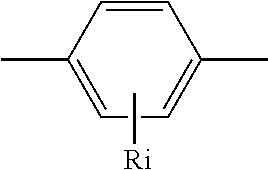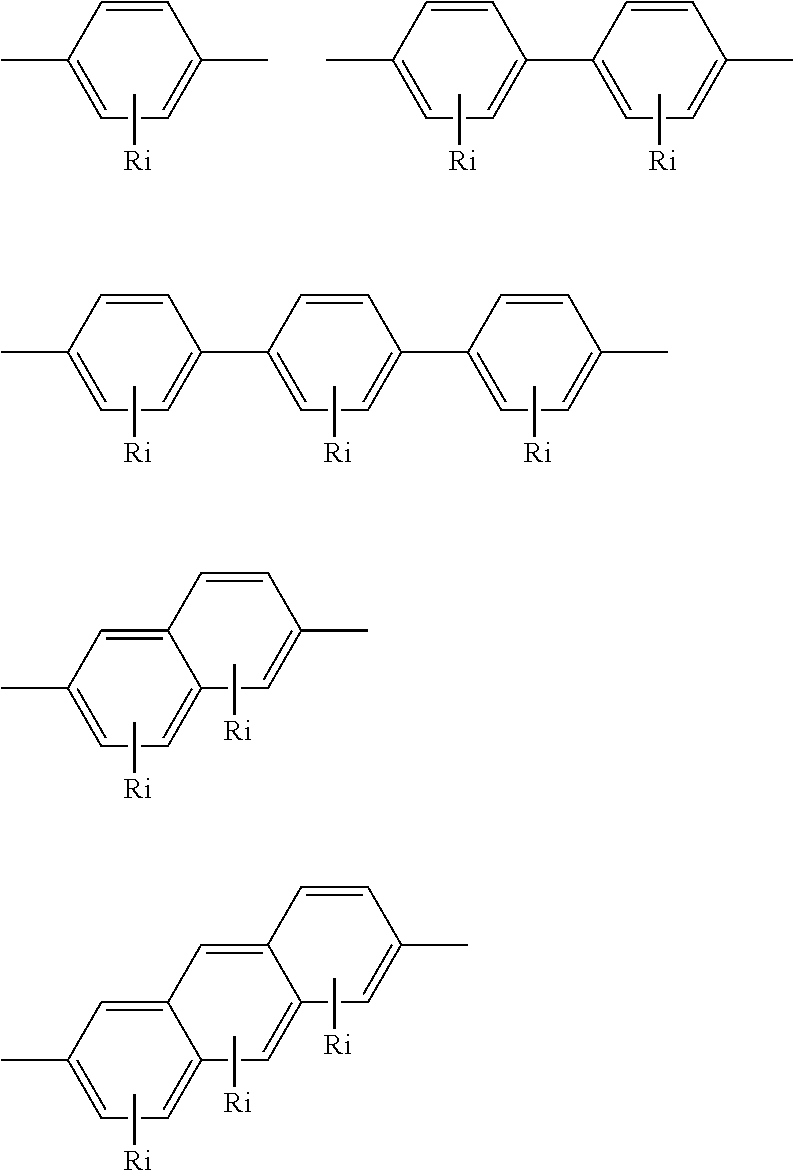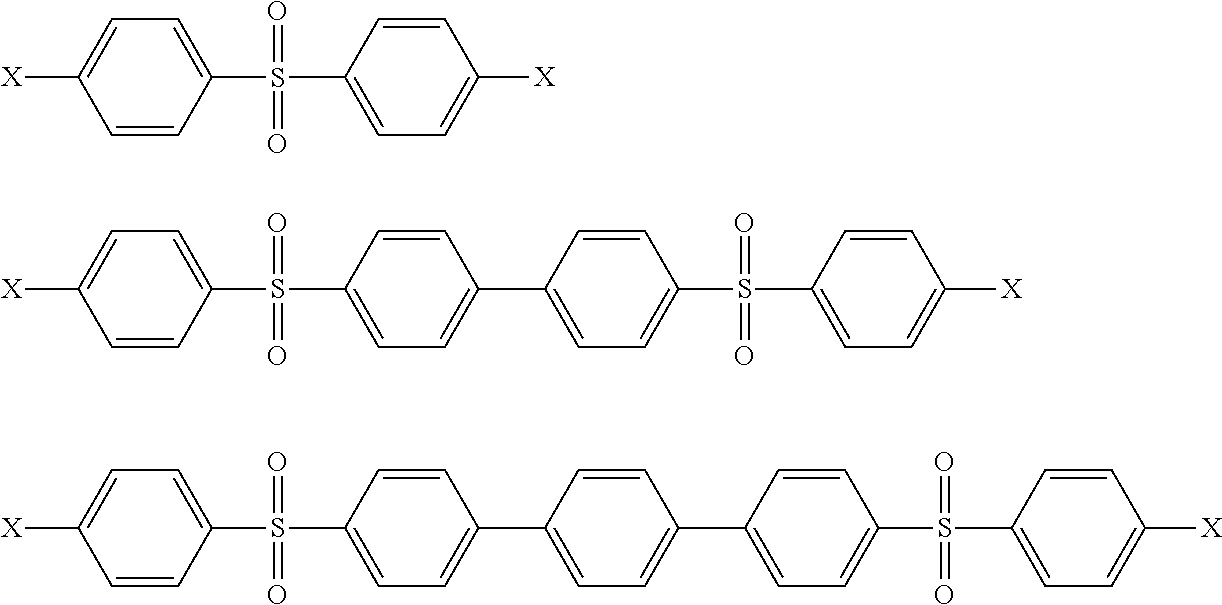Process for the manufacture of dihalodiphenylsulfones
a technology of dihalodiphenylsulfone and dimethylsulfone, which is applied in the field of process for the manufacture of dihalodiphenylsulfone, can solve the problems of reducing selectivity, requiring the use of expensive corrosion resistant materials for construction, and firmly discouraged diethylsulfate or dimethylsulfate use, etc., and achieves high yield and high regioselectivity
- Summary
- Abstract
- Description
- Claims
- Application Information
AI Technical Summary
Benefits of technology
Problems solved by technology
Method used
Image
Examples
example 1
With TFAA, in the Absence of a Solid Catalyst
[0101]In a dry 3-neck 250-mL round bottom flask, fitted with a thermocouple, a distillation receiver allowing returning the vapors to the mixture (Barrett trap)+reflux condenser+silicone oil bubbler, and containing a PTFE-coated stir bar, were introduced successively:[0102]1. 10.23 g of concentrated H2SO4 [0103]2. 34.66 g of TFA[0104]3. 125.99 g of TFAA.
[0105]The 3rd neck of the flask was then sealed with a stopper. The mixture was cooled down to 10° C. with an ice bath and 54.32 g of MCB were added. The temperature of the reaction medium was maintained to 10° C. with an ice bath during the addition. After the end of the addition, the ice bath was replaced with a heating mantle and the temperature was increased to 40° C. The reaction medium was held at 40° C. for 1 hour, then heated to 53° C. The reaction medium was held at 53° C., under reflux conditions, for 3 hours. The distillation receiver was then placed in the collecting position (...
example 2
With Nafion® SAC13
[0106]The same procedure as for example 1 was followed except that a solid acid Nafion® catalyst was introduced into the flask with H2SO4:
Reagents:
[0107]1. 10.15 g of concentrated H2SO4 [0108]2. 2.39 g Nafion® SAC13 (2-3 mm extrudates, not dried)[0109]3. 34.69 g of TFA[0110]4. 125.11 g of TFAA.
[0111]58.35 g of MCB were added at 10° C. 144.91 g of distillate were collected at 100° C. At the end of the reaction, 24.11 g of 4,4′-dichlorodiphenyl sulfone were isolated after removal of the catalyst by filtration on Buchner funnel and precipitation of 4,4′-dichlorodiphenyl sulfone in the filtrate with water (95.1% 4,4′-isomer), 84% yield.
example 3
With Montmorillonite K10
[0112]The same procedure as for example 1 was followed except that a solid acid montmorillonite catalyst was introduced into the flask with H2SO4:
Reagents:
[0113]1. 10.25 g of concentrated H2SO4 [0114]2. 2.51 g montmorillonite[0115]3. 34.31 g of TFA[0116]4. 127.57 g of TFAA.
[0117]57.32 g of MCB were added at 10° C. 149.89 g of distillate was collected at 100° C. At the end of the reaction, 23.18 g of 4,4′-dichlorodiphenyl sulfone were isolated after removal of the catalyst by filtration under pressure and precipitation of 4,4′-dichlorodiphenyl sulfone in the filtrate with water (96.1% 4,4′-isomer), 80% yield.
PUM
| Property | Measurement | Unit |
|---|---|---|
| Temperature | aaaaa | aaaaa |
Abstract
Description
Claims
Application Information
 Login to View More
Login to View More - R&D
- Intellectual Property
- Life Sciences
- Materials
- Tech Scout
- Unparalleled Data Quality
- Higher Quality Content
- 60% Fewer Hallucinations
Browse by: Latest US Patents, China's latest patents, Technical Efficacy Thesaurus, Application Domain, Technology Topic, Popular Technical Reports.
© 2025 PatSnap. All rights reserved.Legal|Privacy policy|Modern Slavery Act Transparency Statement|Sitemap|About US| Contact US: help@patsnap.com



